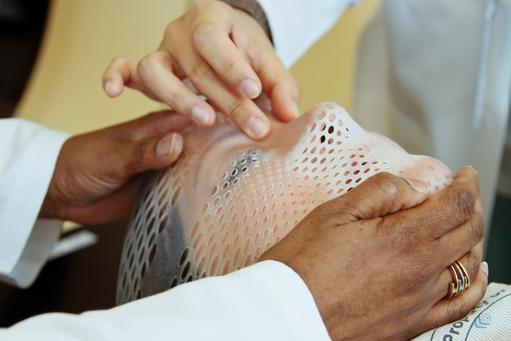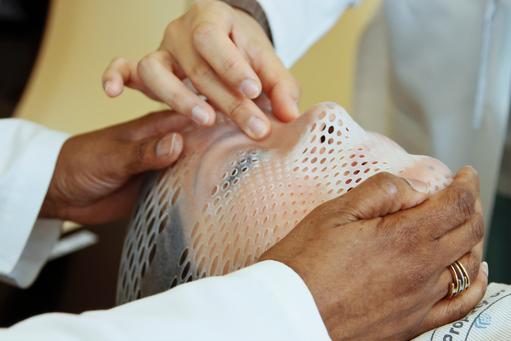Tag

On the 1st November 2006, 43 year old Alexander Litvinenko invited two Russian colleagues for a traditional English afternoon tea at a central London hotel. Litvinenko, a former KBG officer who escaped prosecution in Russia, received political asylum in the UK and became a spy for MI6 as well as the Spanish secret service.
One guest seruptitiously slipped a lethal dose of polonium-210 into Litvinenko's tea. Three weeks later Litvinenko died of radiation poisoning after suffering hair loss, fever, endema, diarrhoea, nausea, vomiting and coma. Today, in thousands of clinics throughout the world, the same radiation that killed Alexander Litvinenko is successfully used to cure or palliate cancer in millions of patients.
Were radiation therapy a drug, it would be a wonder cure.
A booming global device market
Each year worldwide, there are about 13 million new cancer cases diagnosed, about 0.35 million in the UK and some 1.6 million in the US. The National Institute of Health estimates that the annual cost of cancer to the US is about US$227 billion.
About a half of people in the UK and two thirds of Americans diagnosed with cancer receive radiation therapy and radiation oncology has become big business. By 2018 the annual global revenues from the radiation therapy device market are expected to reach US$3.6 billion. Driven by increases in the incidence rate of cancer and increasing demand from emerging markets, the radiation therapy device market is projected to grow at an annual rate of over 9%.
Accuracy with minimal side effects
Radiation therapy employs high energy radiation along a spectrum of different wavelengths. The type and amount of radiation that a patient receives is carefully calculated to destroy cancer cells, while causing as little damage as possible to surrounding healthy tissue. With advances in technology, clinicians are able to give powerful doses of radiation quickly with pinpoint accuracy, targetting only the tumours, sparing nearbly healthy tissue and keeping toxicity levels low. The treatment has minimal side effects.
The genesis
Radiation therapy has its genesis in late 19th century medical experiments undertaken soon after the discovery of X-rays. Twice Nobel Laureatte Marie Curie discovered radium in 1898 and later coined the word "radiation". Radium was used successfully to treat lupus and later was found in hot spring water, which was then marketed as a cure for arthritis, gout and neuralgias.
In the early 20th century, medical science believed that small doses of radiation were harmless and the effects of large doses temporary. Marie Curie was a casualty of this misconception. The widespread use of radium in medicine ended when it was discovered that physical tolerance of radiation was lower than anticipated and exposure resulted in long term cell damage.
In 1934 Marie Curie died of aplastic anemia contracted by excessive exposure to radiation and is buried in a lead-lined coffin. During her life she regularly carried tubes of radioactive isotopes in her pockets and commented on how beautifully they glowed in the dark. Her laboratory is preserved at the Musee Curie, but all her scientific papers are too dangerous to handle and scholars who want access to them have to wear special protective clothing.
Variation in Service
Radiation therapy provision varies significantly across Europe. This is partly because of the financial and technical investments required to establish and operate radiation therapy centres.
In January 2013 The Lancet published a 33 country comparative European study of radiation therapy provision. Researchers found significant disparities in access to radiation treatment, substantial unmet needs and a fair amount of service fragmentation. The Netherlands, Nordic countries and the UK employ a centralized approach, with services concentrated in a few large centres, while in most other European countries the service is more dispersed and facilities vary in size and capacity. The annual number of cancer patients per radiation therapy system ranges from 307 in Switzerland to 1,583 in Romania.
Exquisite accuracy
The late 1990s was a period of progress in radiation therapy with the advent of 3D radiation therapy, intensity-modulated radiation therapy (IMRT) and image guided radiation therapy (IGRT) and today, stereotactic body radiation therapy is widely practiced. This differs from conventional radiation treatment and employs multiple imaging modalities such as PET-CT and MRI, which allows the delivery of high doses of radiation with exquisite accuracy to targeted lesions.
Are healthcare systems and radation therapist ready for the future
Radiation oncology continues to evolve as clinicians and medical scientists climb further up the seed-chain of technology and consider next-generation techniques such as adaptive radiation therapy, which focuses on real-time treatment planning. Recently, the University of Texas, MD Anderson Cancer Center in Houston, US, joined an international research group dedicated to merging radiation therapy and MRI technology, which is expected to deliver images of a patient's soft tissues and tumours during therapy.
The MIMA Cancer Center in Melbourne, Florida, US has invested heavily in radiation therapy and its technological infrastructure. It uses information technology to pull together the interfaces between its treatment planning, treatment delivery and information management systems and provides a repository for images, clinical documentation, scheduling, treatment plans and follow-ups. MIMA is paperless and treatment planning images are immediately sent to treating physicians' image enabled cell phones, which allows them to view images and check data anywhere and at any time. Treating physicians also use their mobile phones to show patients images of their progress.
Such technologies are expected to enhance radiation therapy, but they are also expected to generate petabytes of patient data, increase collaborative and image-dependent workflow and require significant investments in information technology infrastructure.
Are healthcare systems and radiation therapist ready for this?

Directory:
Tags:
Cancer research and cancer treatment are evolving very rapidly. Built on a platform of intensive molecular research, the prognosis of cancer is beginning to be transformed. We have huge amounts of cancer information at our disposal. The challenge is how to translate these into the clinic and make cost effective treatments.







